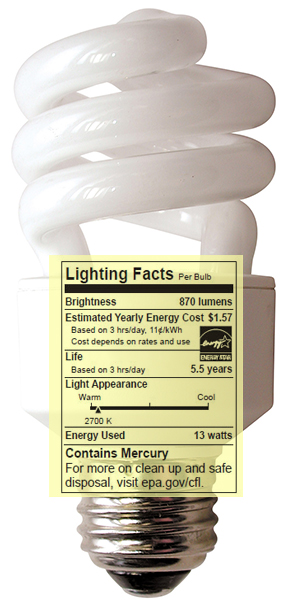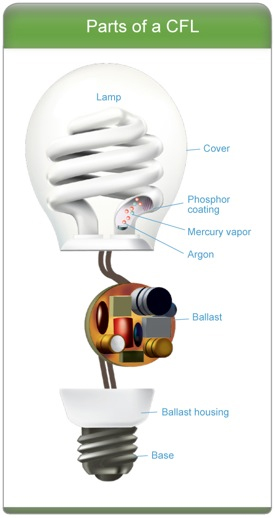What do you do with your old fluorescent light bulbs?How are fluorescent bulbs different than other light bulbs?Why would fluorescent light bulbs leave landfills in a bad situation?

Fluorescent light bulbs contain a hidden inner layer of mercury,this mercury is normally secured within the airtight bulb with no problems.However when the bulb is shattered,either intentionally of on accident,that's when problems can arise.The problem lies when the mercury components of the fluorescent and the(CFL)compact fluorescent light bulb become airborne or contaminate water sources.This generally happens when the light bulbs are not disposed of correctly.
This may sound disastrous,however the CFLs(compact fluorescents)contain a very small amount of mercury,an average of 4 milligrams(mg)per average sized bulb.The older thermometers are a good example,they contained about 500 milligrams of mercury,this is equal to the mercury in 125 CFLs bulbs.

Why can't they make CFLs without mercury?Mercury is an essential element of the CFL,it allows the bulb to be an efficient light source.Generous improvements are being made by CFL manufacturers to reduce the amount of mercury in their fluorescent bulbs to minimal amounts.With incredible technological advances and the National Electrical Manufacturers Association,the average mercury content has dropped 20 percent in the past several years with some manufacturers making larger strides and dropping the mercury content to 1 mg per light bulb.
Although some companies are taking larger measures to insure mercury does not have the opportunity to reach our landfills,including IKEA.Their recent announcement to remove CFL's from their stores and replace them with only LEDs has shocked and delighted many.
What is the correct way to dispose of fluorescent and the compact fluorescent light bulbs?
- Your local garbage service will have information on how to dispose of CFL's in your local area.Waste Management,etc.
- Take back programs–some large distributors(like IKEA)will actually take back the bulb they sold you and recycle them.Some will not,here is a website devoted to persuading Wal-Mart to take back their mercury products for recycling:21st Century Citizen
- Earth911 offers the ability to search recyling programs in your area.
- Additional local retailers that encourage and support CFL and fluorescent recycling include:
- Ace Hardware store locator
- Aubuchon Hardware store locations
- Bartell Drugs
- Home Depot's CFL recycling program
- IKEA store locations
- Lowe's recycling program and store locator
- Menards store locator
- Orchard Supply store locator
- TrueValue store locator
Here are a few additional resources to help you stay informed about your compact fluorescent buying:
- Energy Star–CFL Light Bulbs
- EPA's What to do with your old CFLs?
- A Bright Idea for Old Fluorescent and CFL Light Bulbs
- Smoky Mountain News–Landfill Coloumdrum





